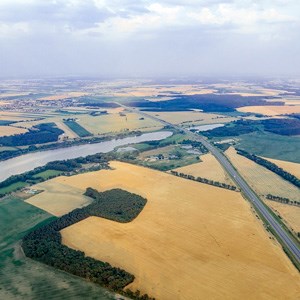Contact
benjamin.feit@slu.se, 018-67 25 26
mattias.jonsson@slu.se, 018 - 67 2450

Ecosystem services can be vulnerable to climate change. How vulnerable depends on how resilient they are to, for example, changing temperatures. In a new study, landscape complexity was found to promote resilience of biological pest control to climate change.
Increased climate variability can threaten ecosystem services such as pollination and natural pest control of agricultural pests. How vulnerable a certain ecosystem service is to environmental change depends on how resilient they are to disturbances.
– If the ecosystem service is provided by a high diversity of species that respond differently to climate change, this can provide the service with resilience to this growing threat, says Benjamin Feit.
Now, researchers from SLU with colleagues from Germany, USA and Austria have developed a new index of climate resilience of ecosystem services with the help of field and lab studies. The index is exemplified by resilience in biological control of aphids to temperature variability.
– The index combines activity niches of different predators with knowledge about their feeding rates on aphids. Depending on the composition of predators in a certain field, an index of climate resilience is calculated, explains Mattias Jonsson.
– In addition, we did microcosm experiments where the temperature was experimentally varied. We saw that predator assemblages with higher climate resilience provided more stable pest control. The index of climate resilience that we developed was thus confirmed to be linked to the predator function, says Benjamin.
To test how climate resilience in biological control of aphids varies with landscape composition, ten barley fields in Uppland were selected along a gradient of landscape complexity ranging from complex, with a high proportion of semi-natural habitat, to simple landscapes dominated by arable land.
The field assays revealed that the level of climate resilience of biological control was highest in barley fields located in the most complex landscapes.
– Conservation and restoration of non-crop habitats in agricultural landscapes, practices that are known to increase predator diversity and strengthen natural pest suppression, will also provide resilience to ecosystem service in a changing climate, concludes Benjamin.
benjamin.feit@slu.se, 018-67 25 26
mattias.jonsson@slu.se, 018 - 67 2450
Read the full article “Landscape complexity promotes resilience of biological pest control to climate change”.